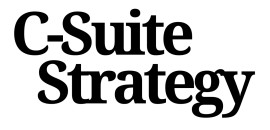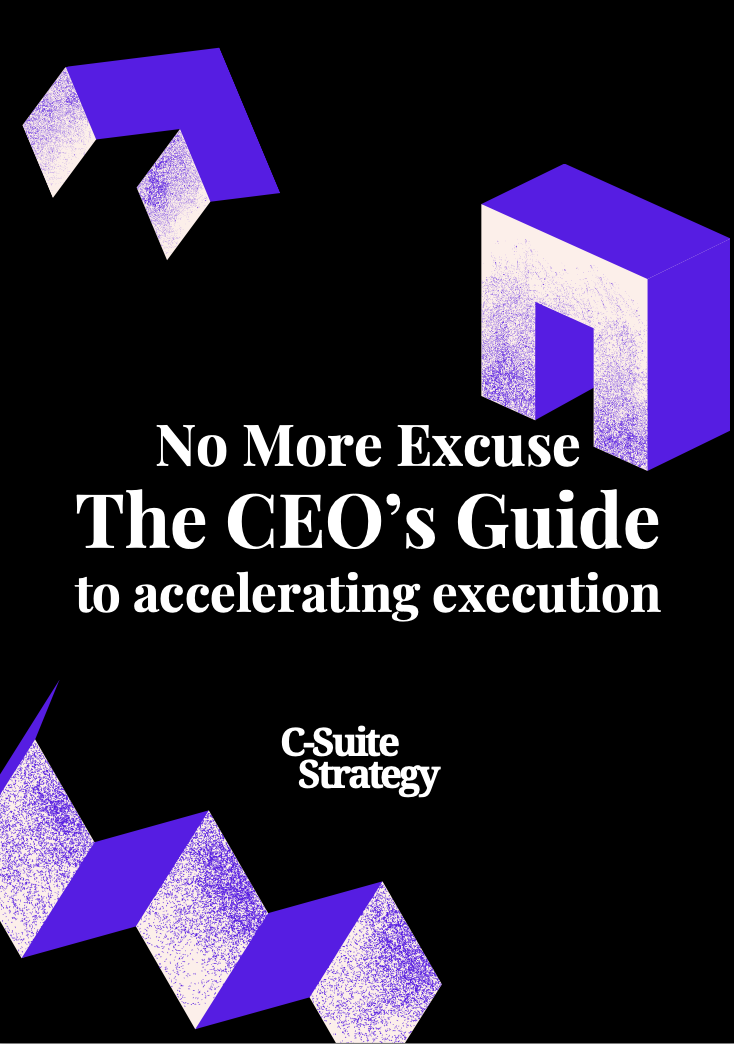Understanding the Essence of Strategic Learning
The Core of Strategic Learning in Business
Understanding the essence of strategic learning is vital for companies aspiring to strengthen their competitive edge in today's dynamic market. Strategic learning is not just about traditional education frameworks but rather an integrative process that aligns with business objectives, adapts to market needs, and, importantly, unfolds throughout the organizational culture. To lay the foundation for effective strategic learning, businesses must root their strategies in the broader community and regional context. This not only enhances their ability to innovate but also supports societal growth, particularly in regions like southern Asia, where learning development plays a crucial role in economic transformation. Applying tailored learning strategies can ignite student interest and create employment opportunities, ultimately contributing towards greater community success. Businesses should go beyond conventional academic practices by integrating strategic learning that encompasses time management and long-term evaluation. This involves a holistic evaluation process that measures the true impact of learning strategies, thus ensuring the continuous academic success of the workforce. Reports and descriptions of learning evaluations provide the resources necessary to refine these strategies over time. Engaging diverse perspectives, including women and people of color, can enhance strategic learning processes. The participation of faculty and staff, as well as industry stakeholders, enriches the learning environment, fostering creativity and innovation. As businesses navigate environments such as naval competition and other high-stake industries, embracing strategic learning can be a game-changer. For organizations operating both in the United States and beyond, establishing a well-structured learning process is critical. Understandably, the challenges of implementing these strategies might arise, yet with robust support systems and ongoing academic coaching, businesses can truly impact success. To delve deeper into how innovation and strategic growth can be harmonized in leadership, explore our insights on harnessing innovation for strategic growth.Aligning Learning with Organizational Goals
Harmonizing Learning Goals with Business Objectives
In the dynamic world of business, aligning organizational goals with strategic learning initiatives is crucial for achieving long-term success. This alignment is vital as it ensures that learning investments directly contribute to the organization’s competitive edge. By bridging the gap between learning and strategic priorities, companies can drive greater business impact and enhance performance across the board.
To create a strong foundation for strategic learning, business leaders must first have a clear understanding of their organization’s overarching goals. This understanding allows them to design learning strategies that support these objectives, fostering a harmonious relationship between business and learning. The description of these goals should be continuously evaluated, ensuring they remain relevant in the face of shifting market conditions.
Strategic learning initiatives must be tailored to meet the specific needs of the organization. This involves developing targeted programs that address critical skill gaps and align with the company’s mission. For example, fostering skills within southern Asia or other emerging markets can open up new employment opportunities, while a focus on time management and academic coaching can improve efficiency from top management down to high school level employees.
Leaders should engage faculty and staff in regular learning evaluations to track and report on the progress towards strategic objectives. Evaluation findings should be leveraged to refine learning tactics and ensure resources are utilized effectively, ultimately leading to academic and business success. By fostering a community of learners who are aligned with the company’s goals, organizations can cultivate a culture that supports continuous improvement and strategic growth.
Incorporating voices from diverse regions, including people of color and women, enriches the strategic learning process and provides a comprehensive perspective on business challenges. Organizations that are successful in integrating diverse viewpoints are better positioned to support both internal development and external innovation.
As businesses in the United States and beyond navigate a rapidly changing environment, a strategic approach to learning is more important than ever. By aligning learning goals with business objectives, companies can harness the full potential of their workforce and maintain a competitive advantage.
For further insights into aligning learning initiatives with strategic objectives, consider these innovation strategies tailored for C-suite leaders, which can complement and enhance strategic learning endeavors.
Building a Culture of Continuous Learning
Fostering an Environment of Sustained Intellectual Curiosity
Creating a culture of continuous learning is more than just a strategic imperative; it is the engine that drives innovation and long-term success within organizations. This foundation requires an integration of aligned business strategies where each member, from faculty staff to community leaders, is engaged in the learning process. Critical to this transformation is the evaluation of current learning practices, which not only supports academic success but also offers significant employment opportunities. This, in turn, sets a precedent for success that extends beyond traditional business metrics and into regional engagement.
Particularly noteworthy is the potential impact strategic learning can have in diverse regions such as southern Asia where there is a growing focus on academic and organizational excellence. Leaders in the United States have long recognized these benefits, hence the strategic imperative in fostering learning environments that encourage contributions from women and people of color. By actively promoting such inclusive practices, businesses not only align with progressive community values but also enhance their competitive edge in the global market.
To truly embed a culture of continuous learning, organizations should invest in both digital and human resources. With strategic use of technology, the learning process becomes more efficient, enabling faculty and staff to focus on the most impactful methods and augment learning development. An example of this might include the deployment of time management tools that help streamline learning evaluation processes or the use of descriptive reporting to aid decision-making.
A successful strategy involves nuanced learning and development models that encourage active participation in learning endeavors, as demonstrated in recent evaluation findings. Reports substantiate that when an organization commits to a culture of learning, the benefits ripple far beyond the organization itself, influencing broader social and economic systems.
For a comprehensive breakdown on how aligning with organisational goals fosters deeper engagement, consult related strategic resources.
Leveraging Technology for Strategic Learning
Integrating Technology for Enhanced Learning Processes
Leveraging technology is a pivotal strategy for propelling strategic learning within organizations. The seamless integration of digital tools helps in creating an environment conducive to continuous learning, supporting the overarching business goals. In the modern landscape, technology acts as a foundation and bridge for academic and strategic advancements, fostering environments where both faculty staff and students can thrive. First and foremost, technology facilitates personalized learning experiences. Tailored programs, supported by advanced analytics and learning evaluation, empower learners to progress at their own pace. This personalization is invaluable for enhancing business strategies, especially when aiming to touch diverse regions such as southern Asia and the United States, where different learning processes might be at play. Moreover, digital platforms enable greater access to resources and educational support. When academic coaching is tied to such platforms, it extends employment opportunities to women and people of color, ensuring a more inclusive approach to strategic learning. Such inclusivity not only fosters community but also ensures a greater business impact by widening the talent pool. A significant benefit of technological adoption is the ability to conduct robust learning assessment and evaluation. Evaluation findings from tools can inform strategic decisions and strategies, optimizing resource allocation and paving the way for long-term success. With insightful reports, leaders can make evidence-backed decisions, propelling the organization toward academic and business success. Furthermore, the integration of technology supports strategic learning development crucial in high-pressure environments such as naval competition or academia, where time management and efficiency are paramount. Smart use of time and resources can significantly enhance a company's strategic position in the global market. Ultimately, the successful adoption of technology in learning fosters an adaptable and resilient organization, well-equipped to meet the evolving demands of the business world. However, as explored in other discussions, understanding and aligning these technological advancements with organizational goals remains key. To maximize strategic learning impact, organizations must continually innovate and adapt, ensuring that all educational strategies remain relevant and effective in the context of current trends.Measuring the Impact of Strategic Learning
Evaluating the Impact of Strategic Learning
In the pursuit of enhancing competitive edge, it is crucial to measure the impact of strategic learning initiatives. This evaluation not only validates the investment but also informs future strategies for greater success. Here’s how organizations can effectively evaluate the impact:
- Establish Clear Metrics: Define what success looks like in your strategic learning process. Metrics could include improved business outcomes, increased employment opportunities, or enhanced academic success among employees.
- Utilize Comprehensive Evaluation Methods: Employ both qualitative and quantitative methods to assess the learning development. Gathering feedback from students, faculty staff, and the community can provide valuable insights.
- Analyze Learning Outcomes: Consider the long-term impact on individuals and the organization. Are employees better equipped to handle naval competition or time management challenges?
- Leverage Technology: Use advanced tools to support the evaluation process. Technology can streamline the collection and analysis of data, providing a more accurate report of the strategic learning impact.
- Regularly Review and Adjust: Continuous learning should be dynamic. Regular evaluation findings should inform adjustments to the learning strategies to ensure alignment with organizational goals.
By focusing on these strategies, organizations can lay a strong foundation for strategic learning that supports not only immediate goals but also long-term business impact. This approach fosters an environment where academic coaching and learning development thrive, ultimately leading to greater success in various regions, including southern Asia and the United States.
Overcoming Challenges in Strategic Learning Implementation
Addressing Key Challenges in Implementation
Successfully implementing strategic learning within an organization demands clarity and resilience. C-suite executives often confront a myriad of challenges when embedding learning practices. Here, outlining core hurdles and practical strategies to overcome them can create a strong foundation for success.
Diverse Learning Needs: One significant challenge is addressing the diverse learning needs across different regions and communities. Whether in Southern Asia or the United States, strategic learning must accommodate a wide array of teaching styles, resources, and cultural backgrounds. Supporting the varied student and staff populations, including people of color and women, requires a customized approach.
Resource Allocation: Efficient resource allocation is key. Strategic learning demands investment in technology, academic coaching, and learning evaluation processes. Balancing time management with financial constraints enables businesses to direct funds toward impactful learning initiatives that bolster long-term academic and employment opportunities.
Faculty and Staff Engagement: Cultivating a culture of continuous learning hinges on engaging faculty and staff members in the learning process. Establishing clear descriptions of roles and expected outcomes aligns their initiatives with the organizational goals. This alignment can be encouraged by offering regular evaluations and reports that highlight the impact strategic initiatives have on academic success.
Adapting to Technological Advancements: The ever-changing landscape of technology requires strategic adaptation by leaders. Organizations that leverage technology, such as digital platforms for learning evaluation and development, will have the greater business impact. This adaptation should occur across all academic levels, including high schools, where foundational learning sets the stage for future excellence.
By focusing on these areas, organizations can effectively overcome the barriers inherent in implementing strategic learning. Such efforts not only foster academic and business success but also prepare them to thrive in competitive environments, even those as complex as naval competition.














